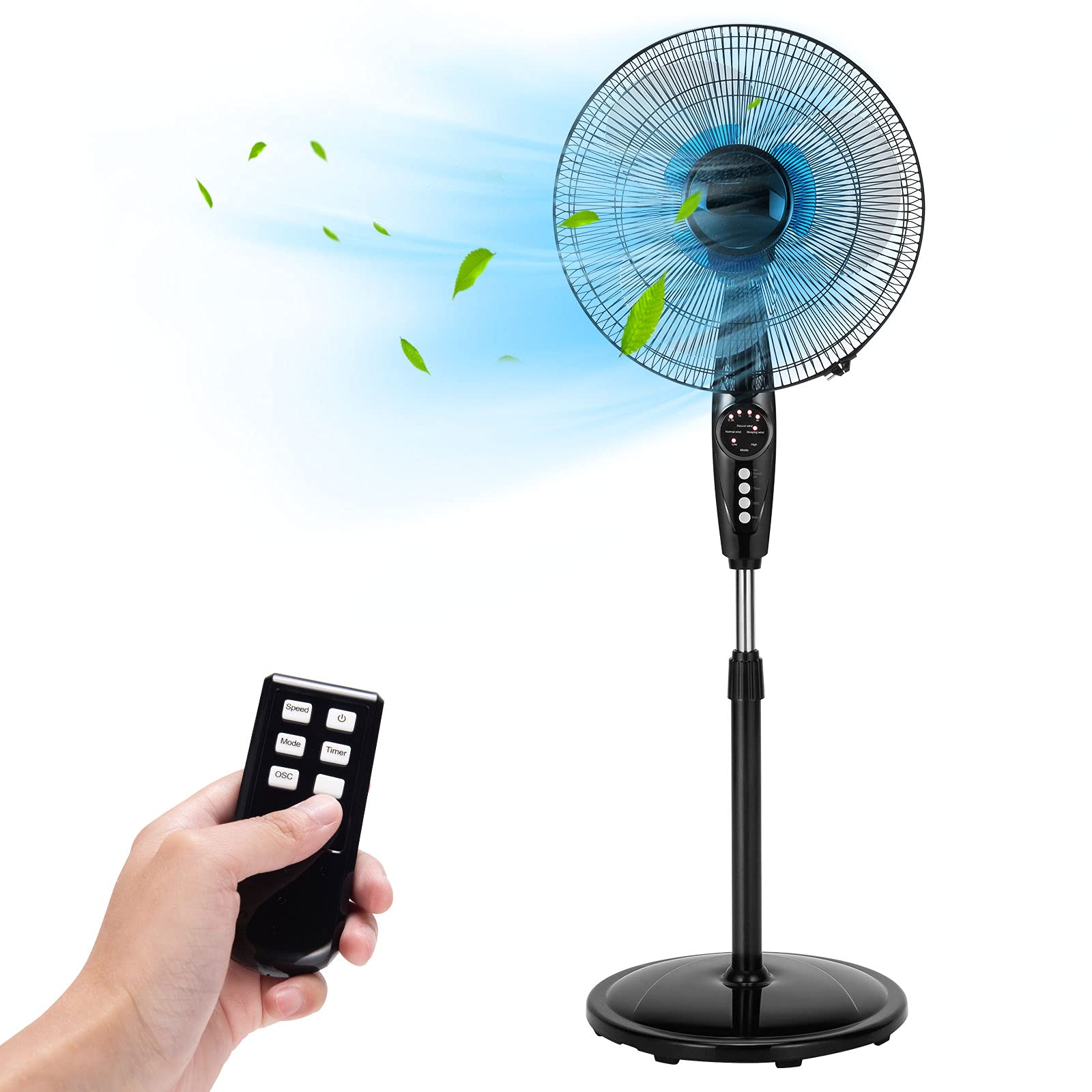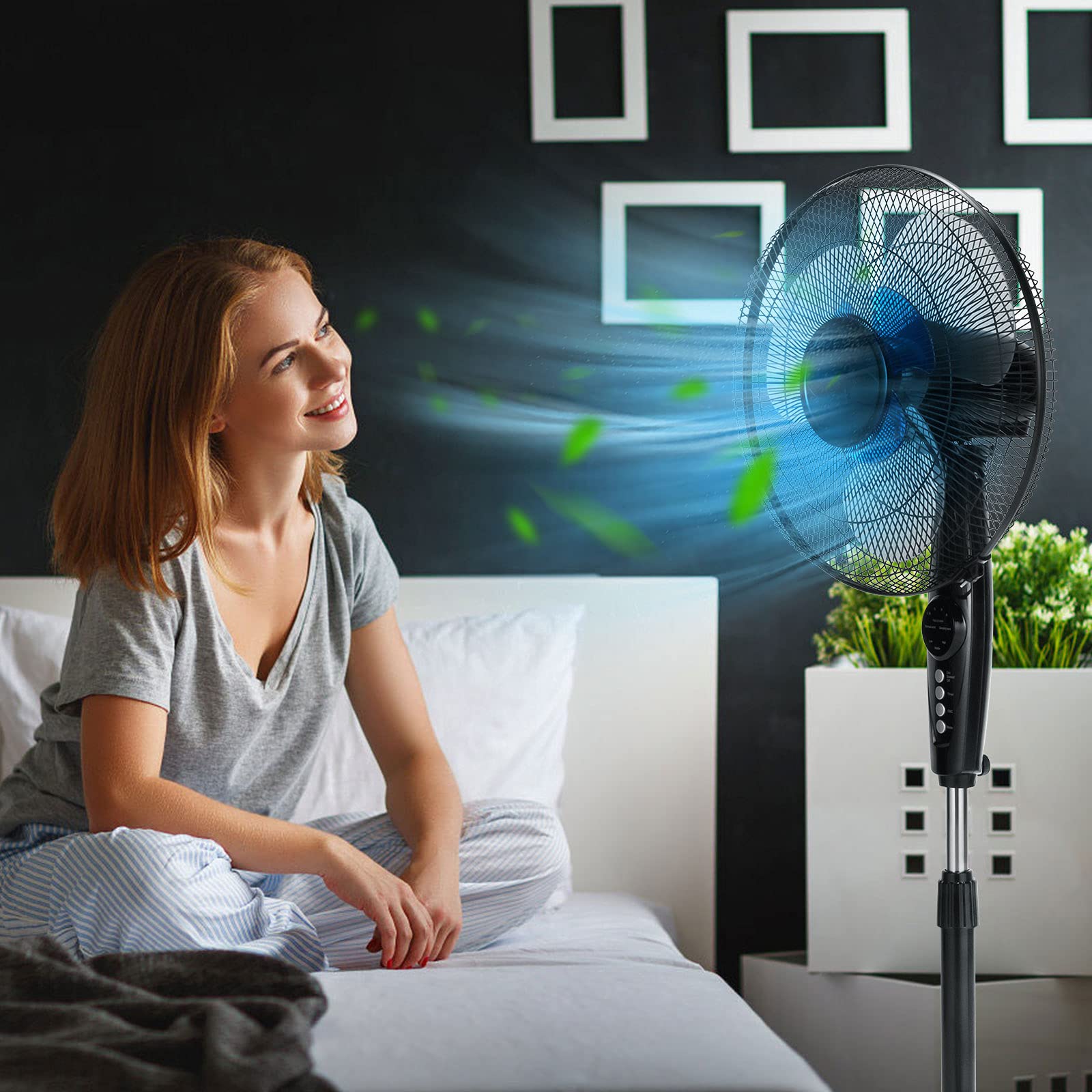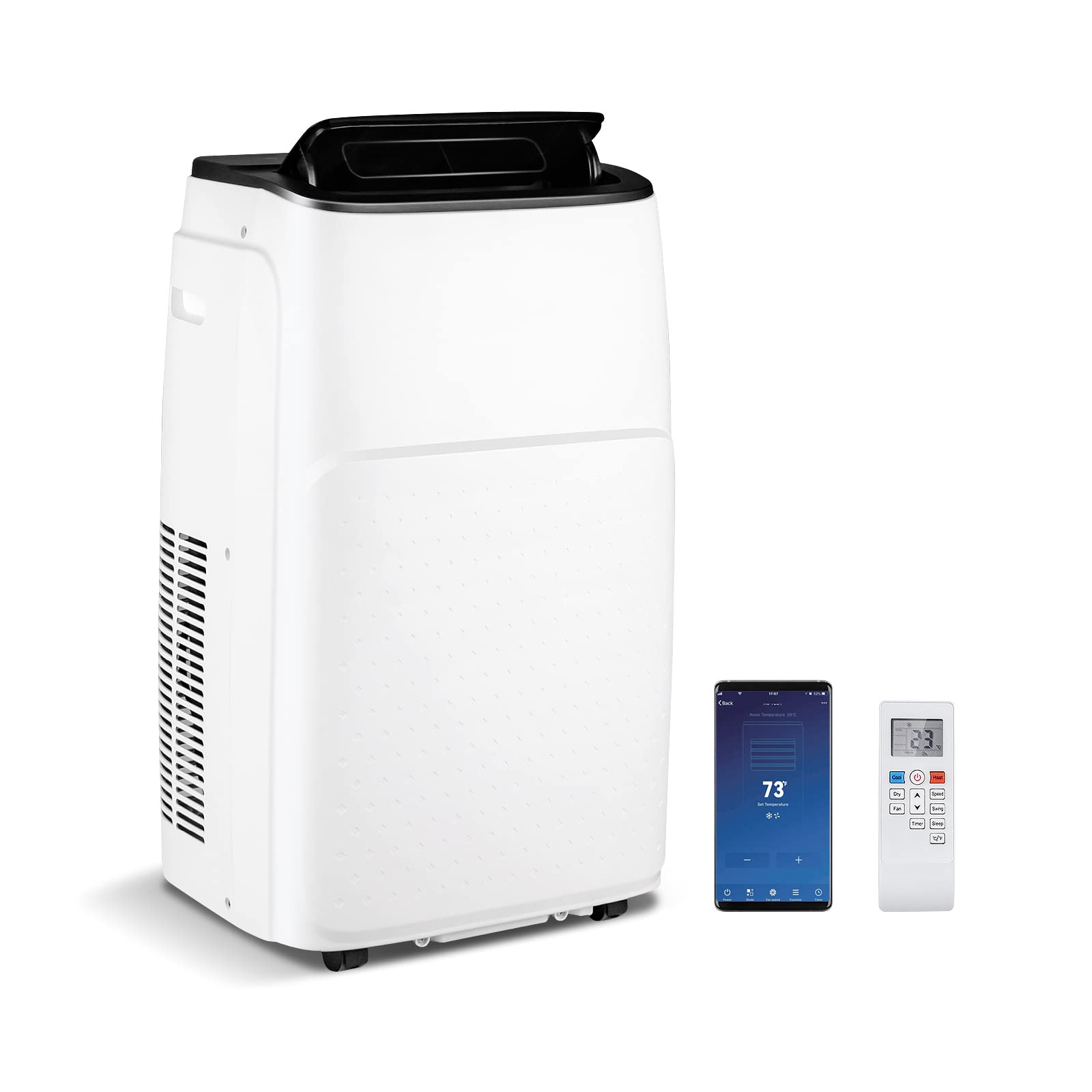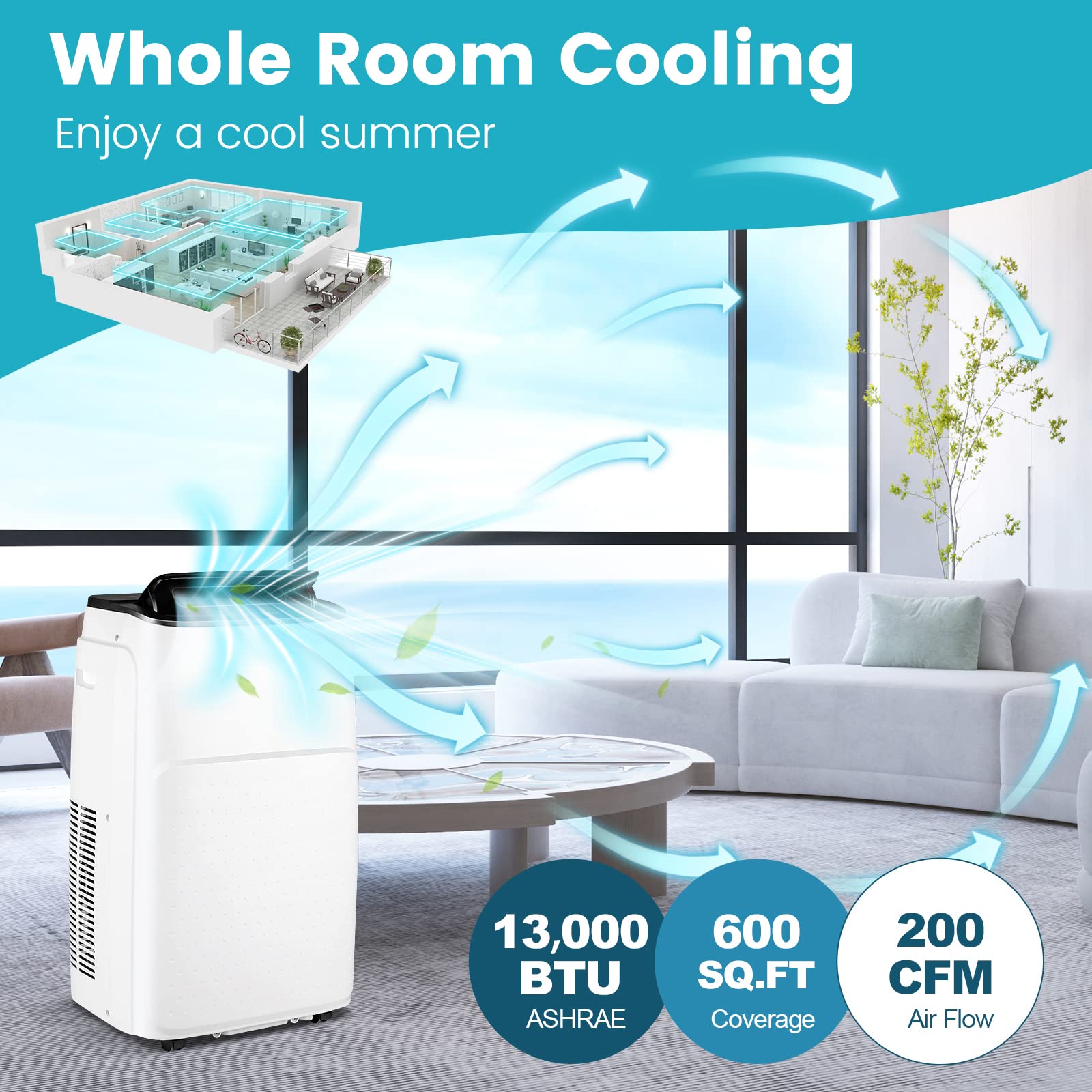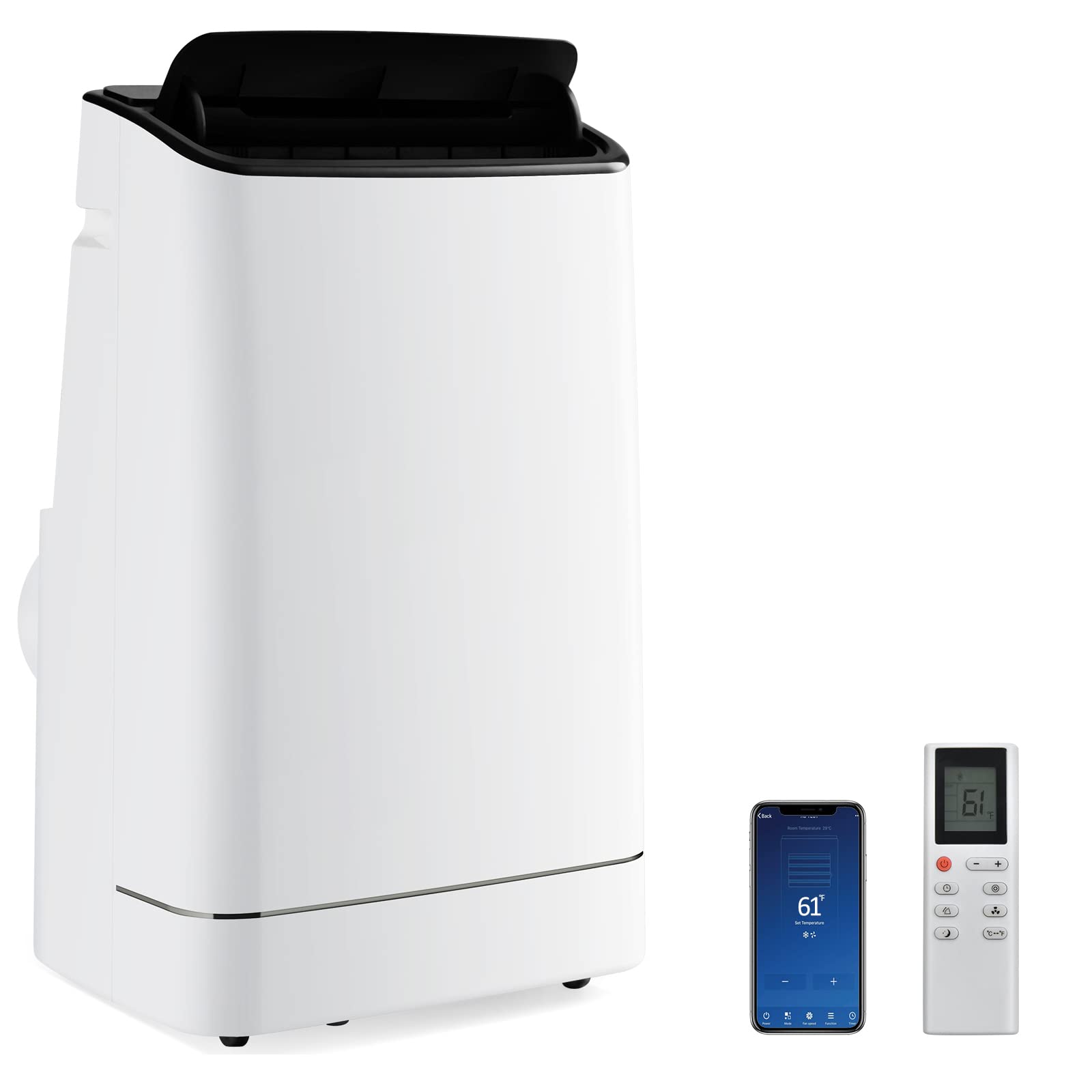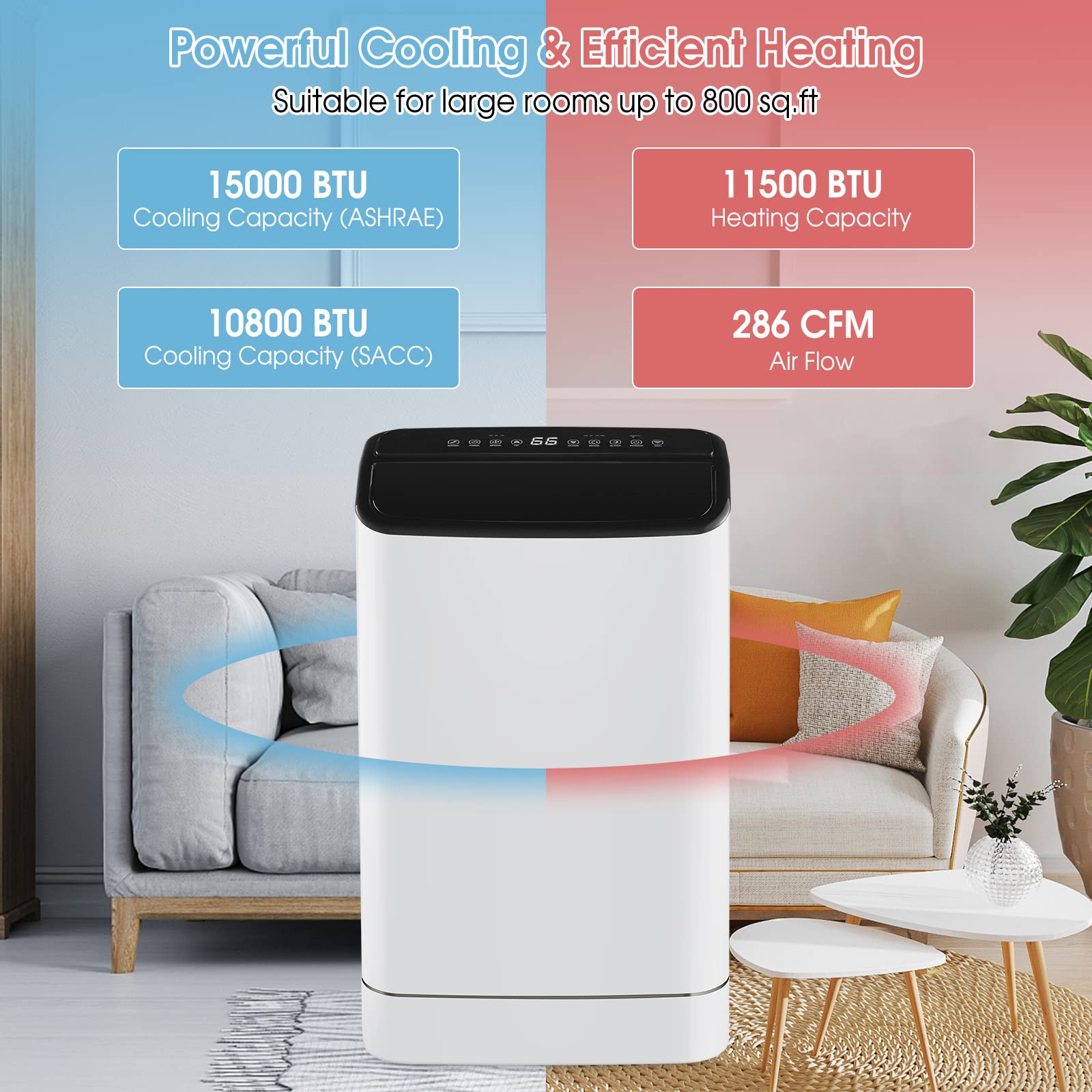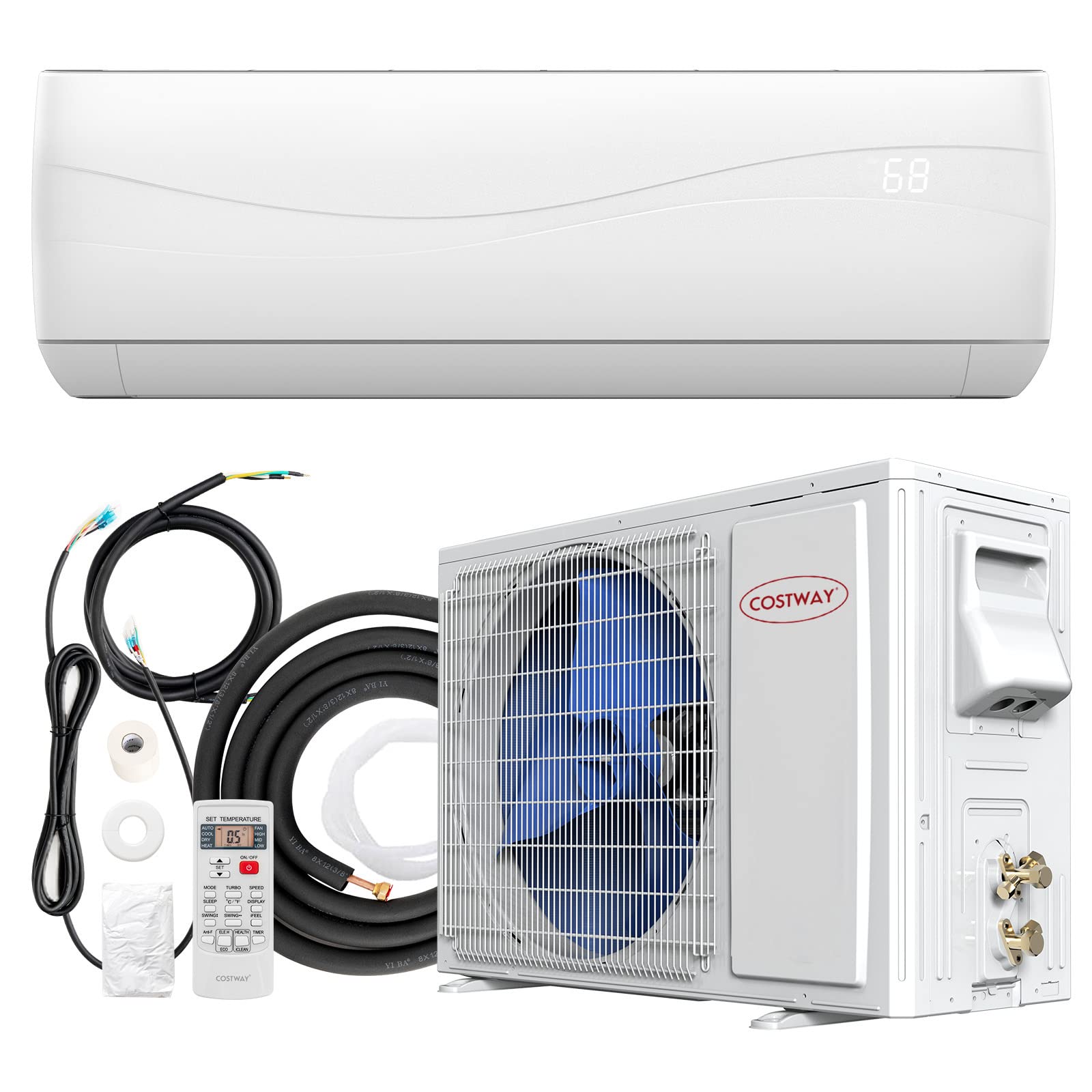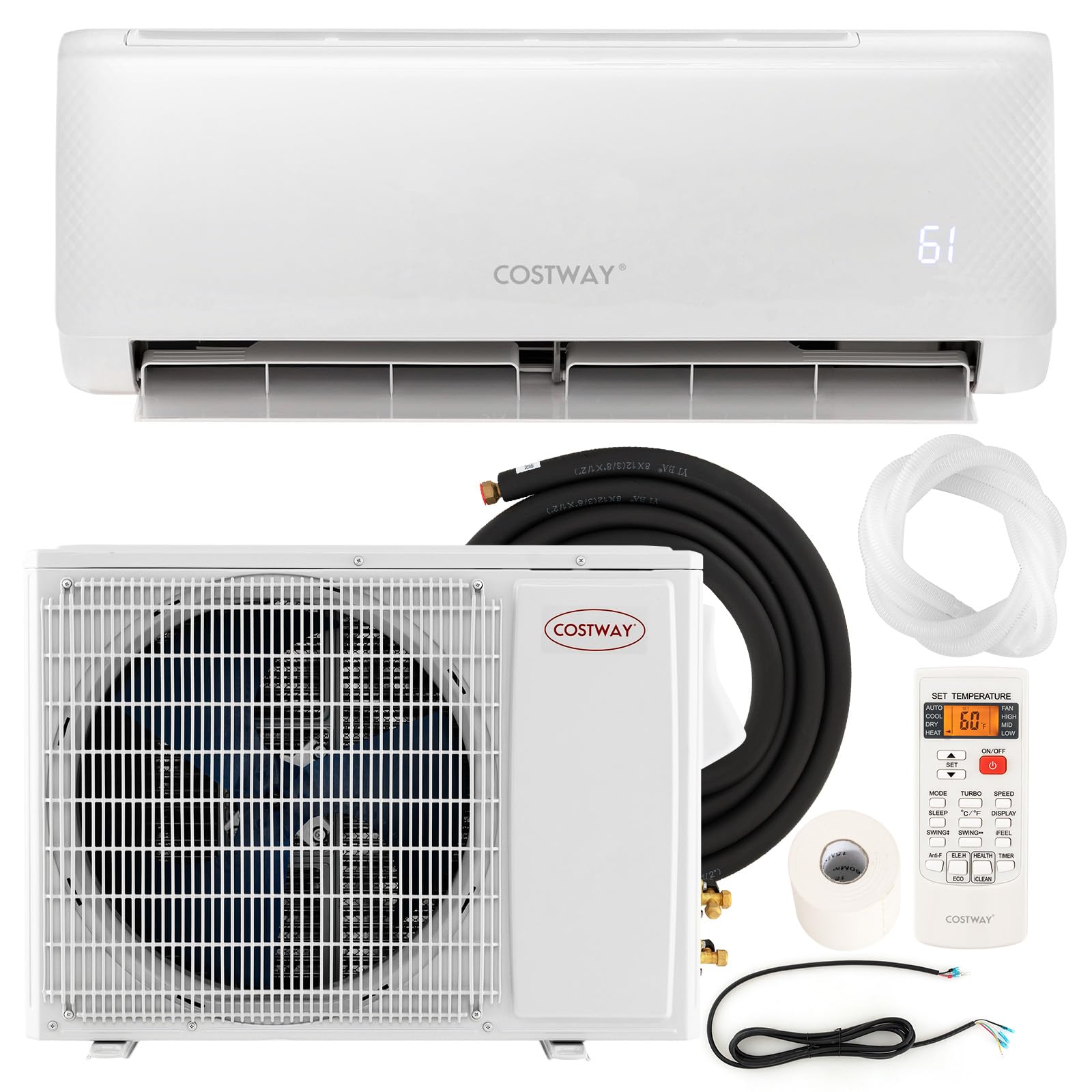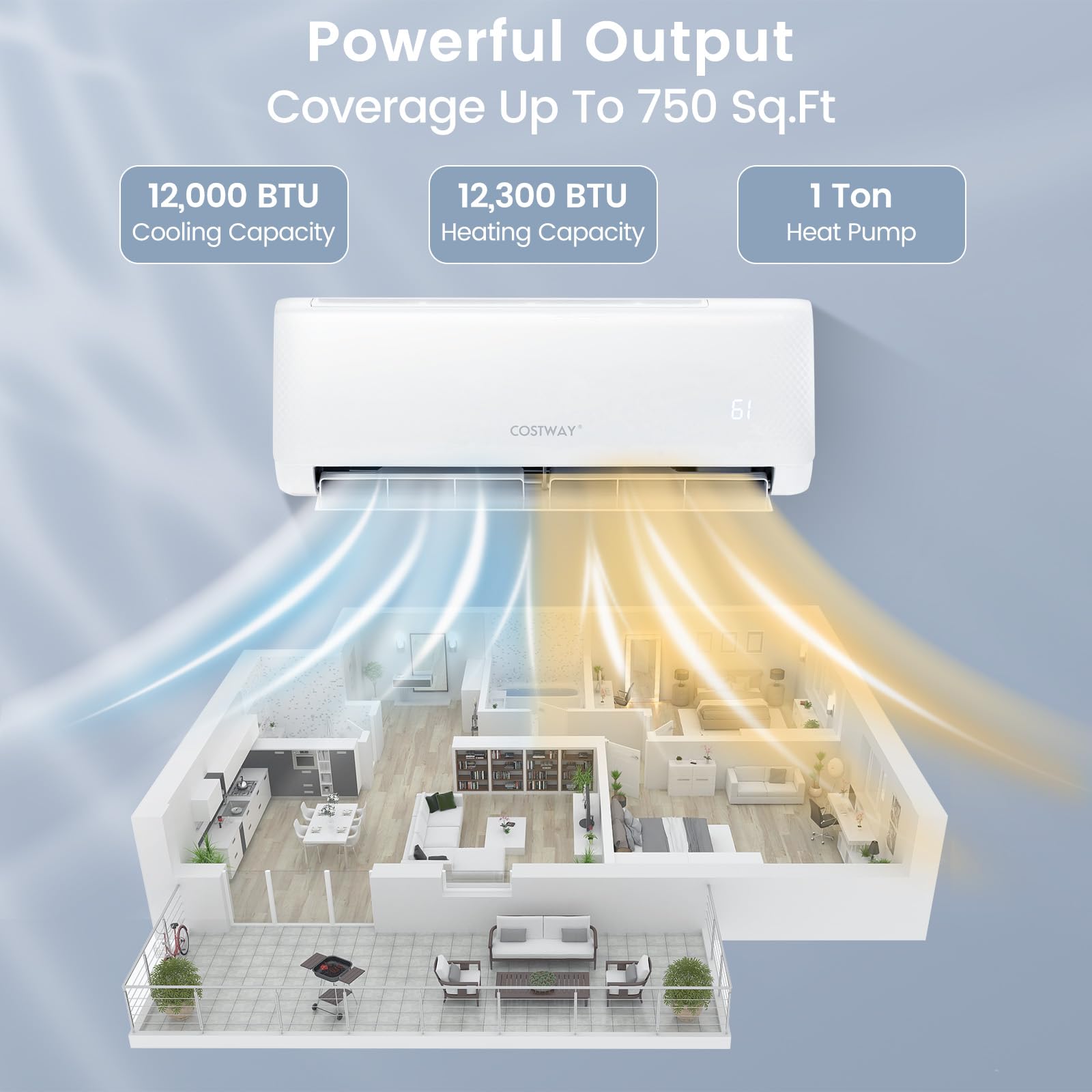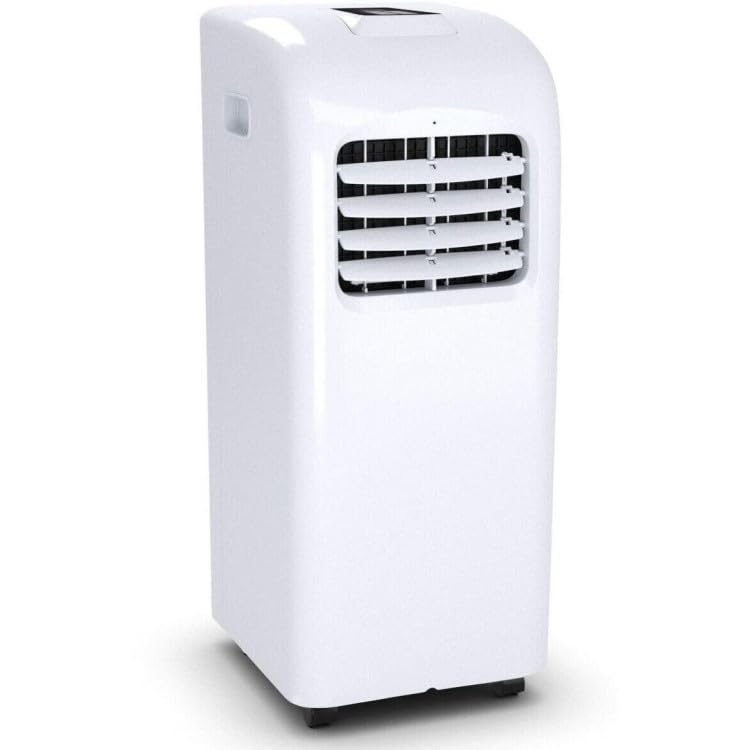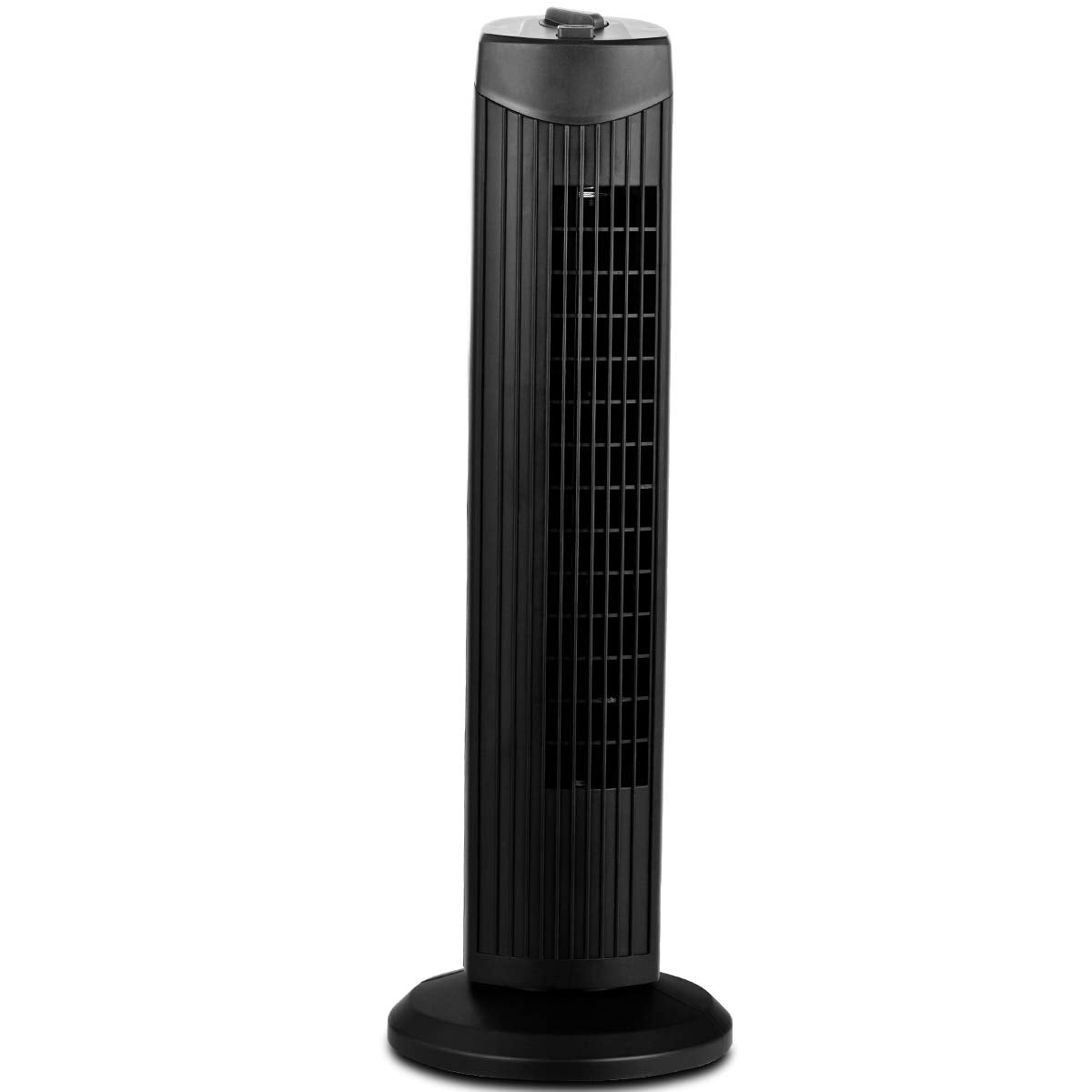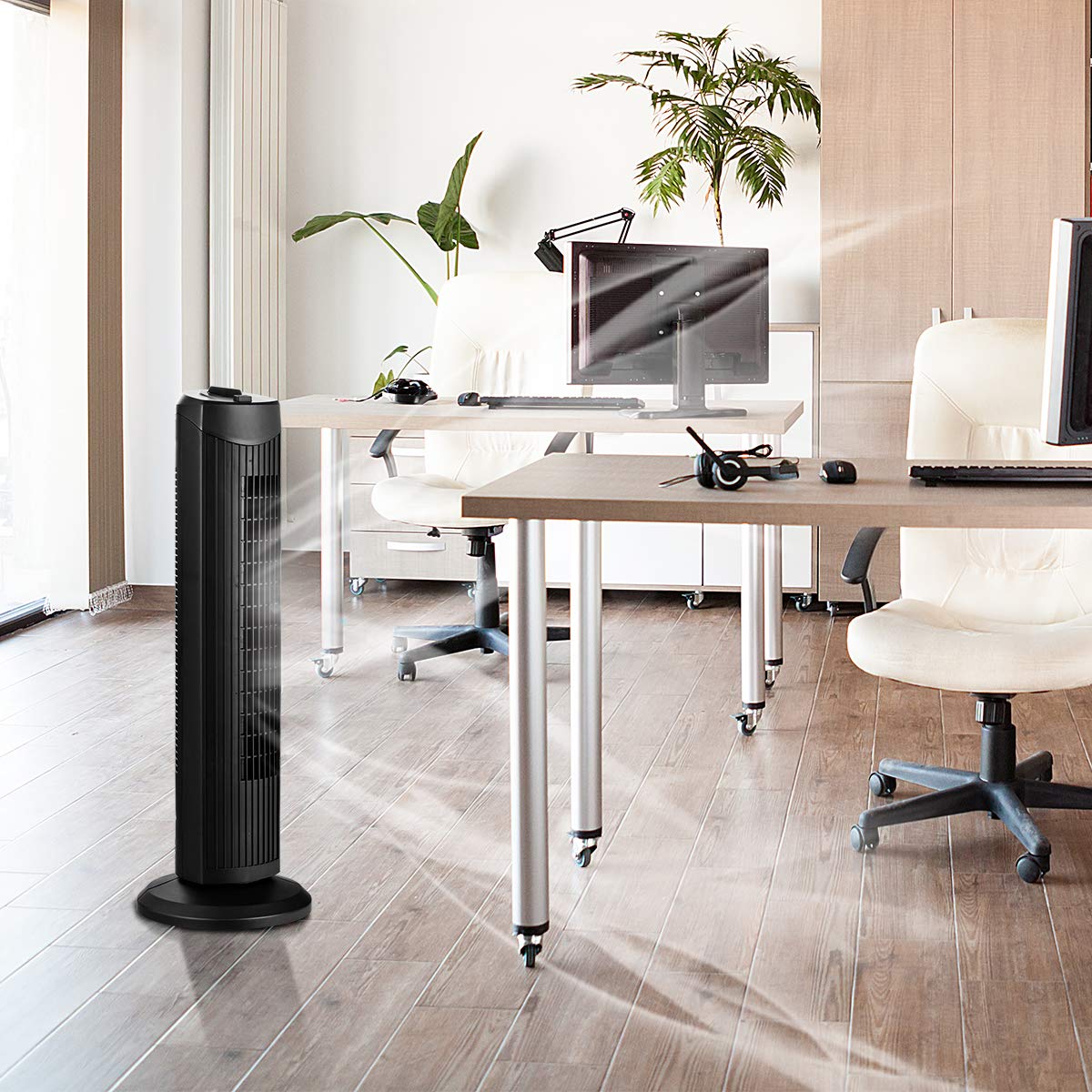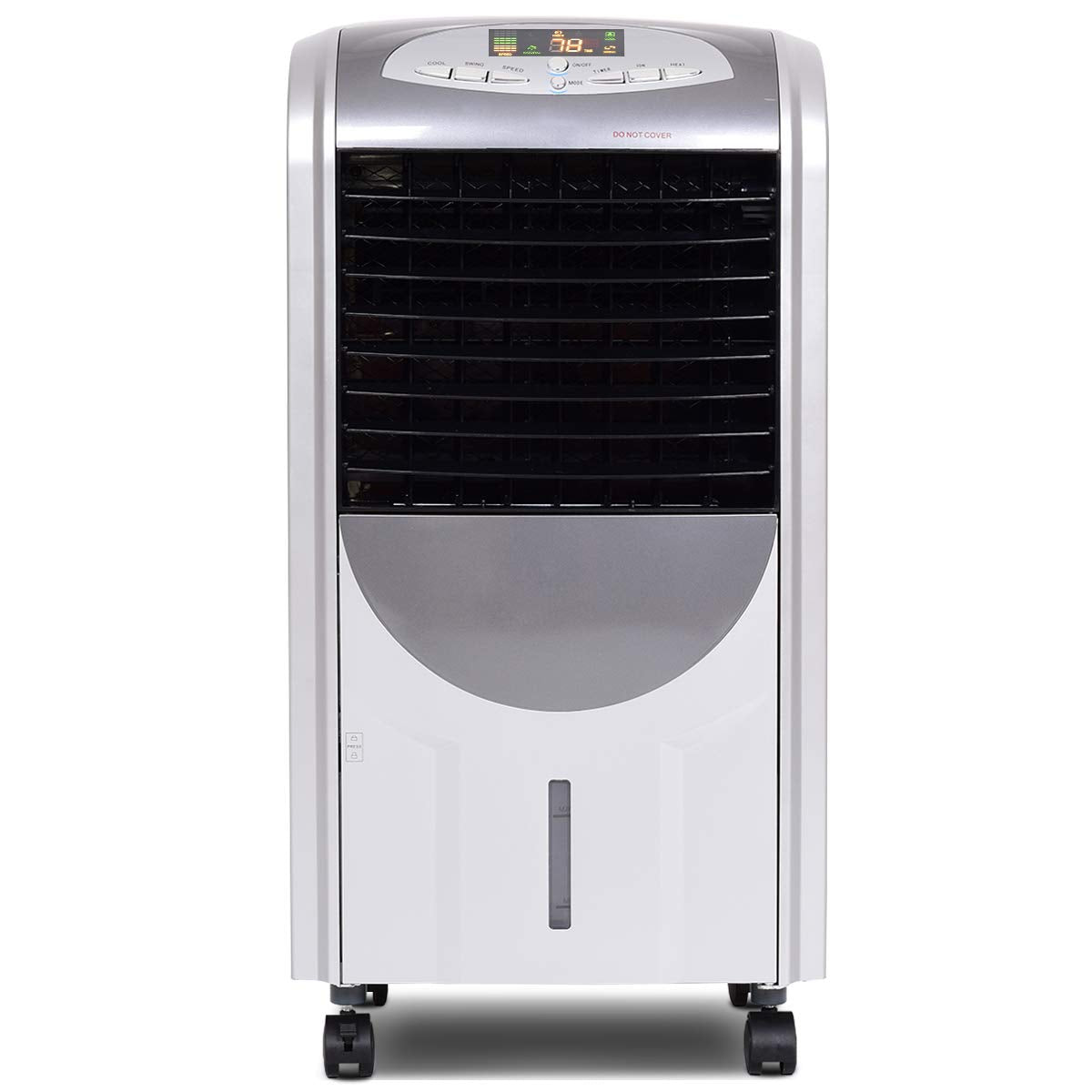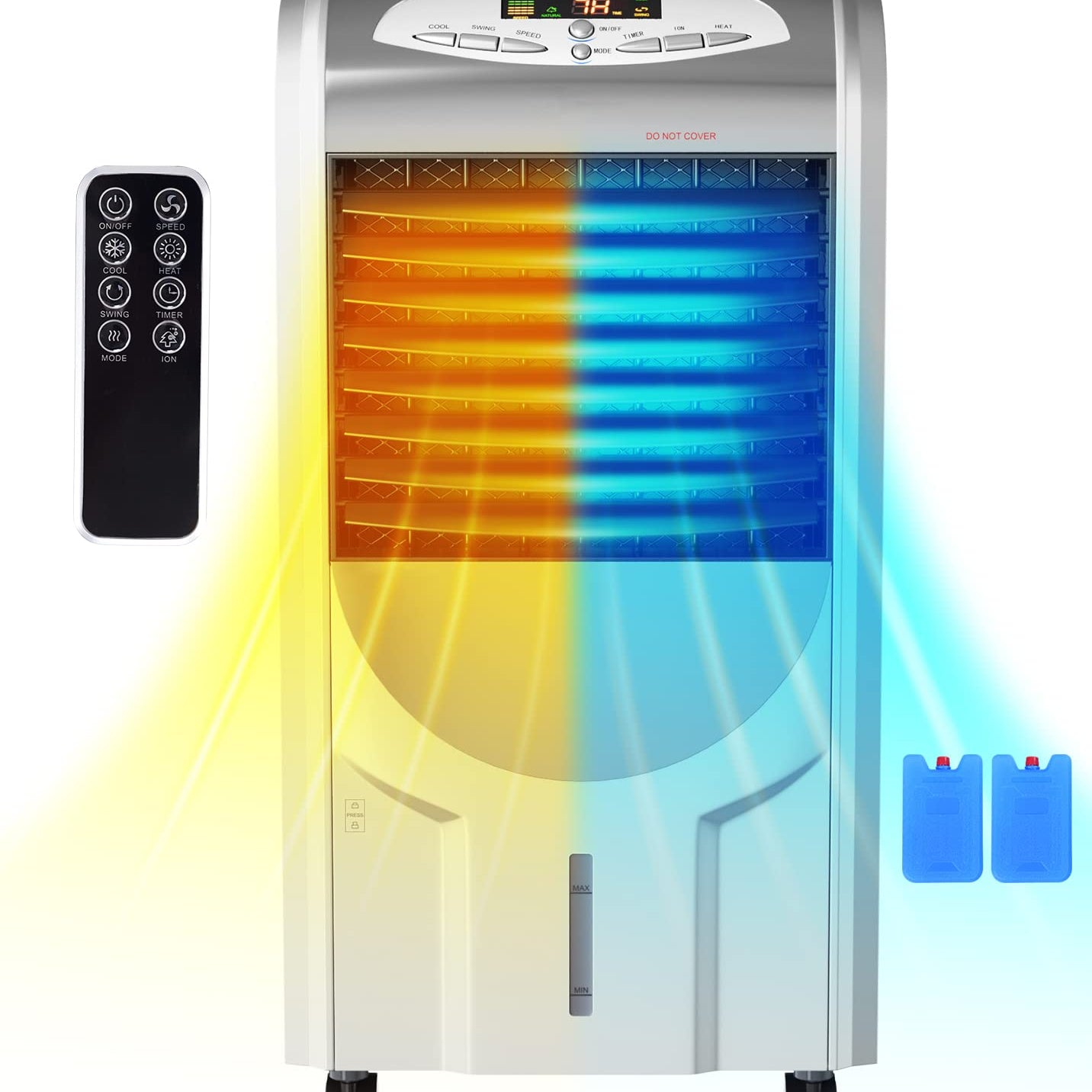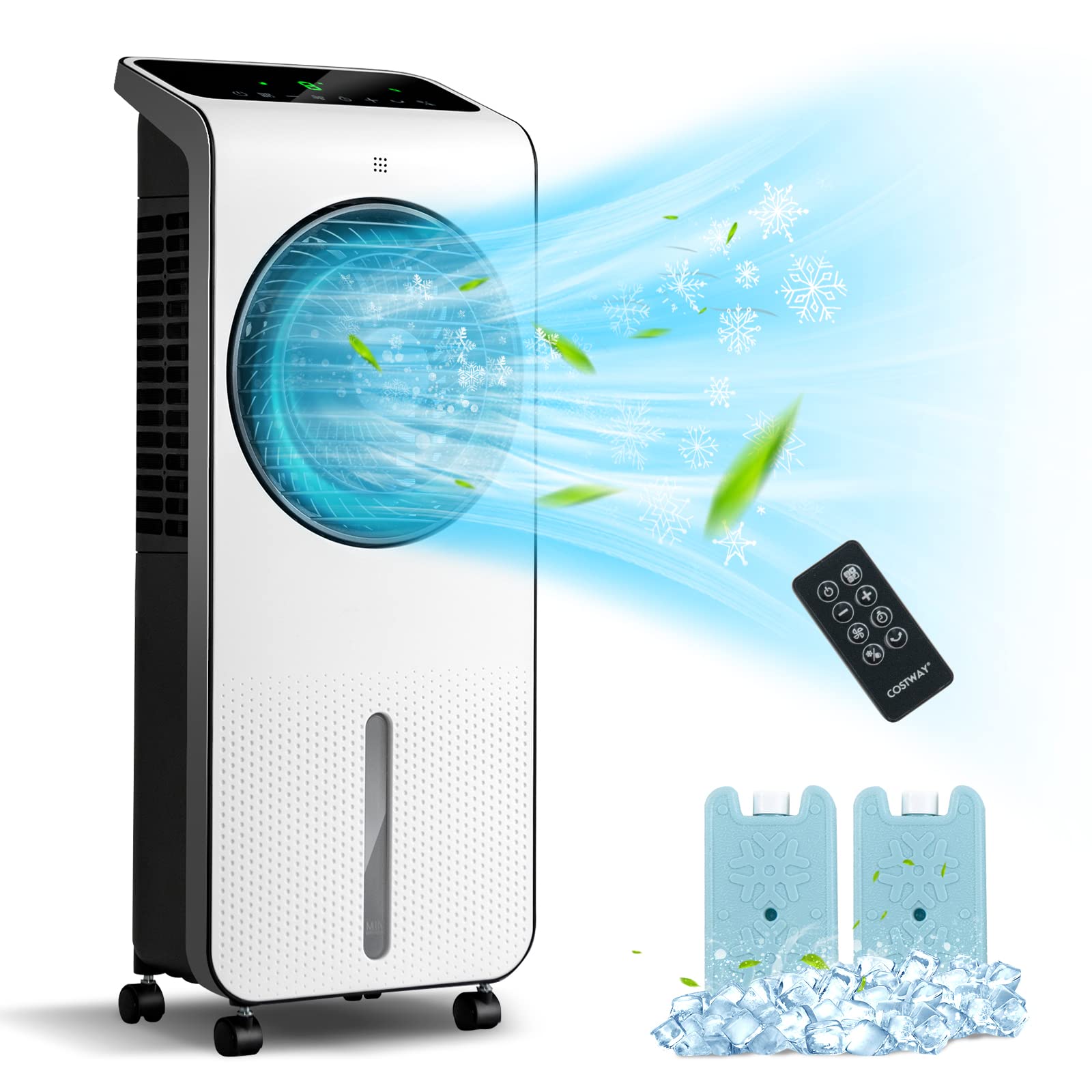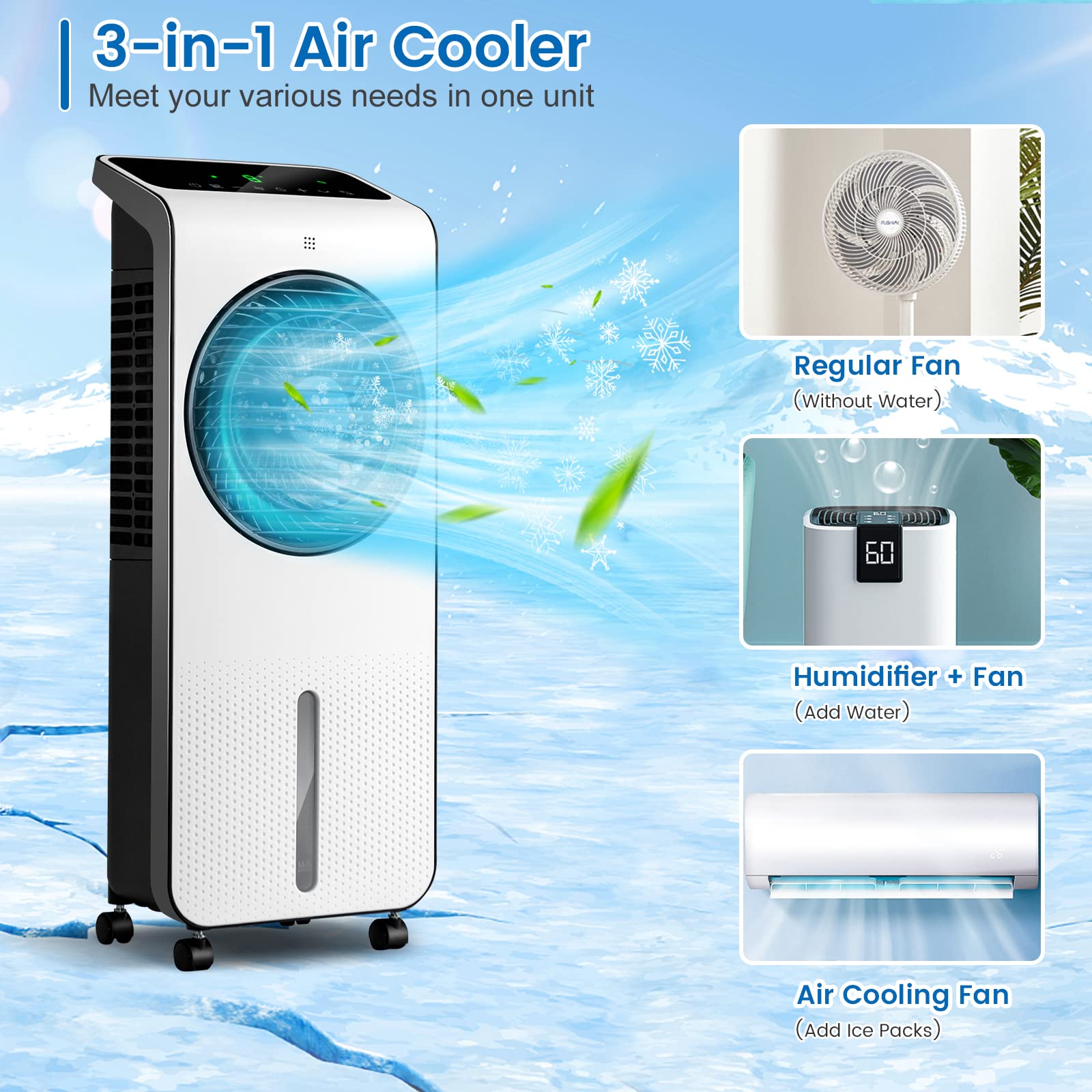Summer is coming! Air conditioning and ceiling fans are two essential home appliance for your living room or bedroom to throw away summer heat! Tangkula air conditioners are excellent choices with low energy consumption! If you encounter any problems when using your air cooler, please free to ask our customer service!
Today, we collect some questions you may face when using standing tower fans or air conditioning. If you are facing any air cooler problems, this article may help!
Moreover, we have updated the article about the ceiling fan. You can click here to find more practical info about ceiling fans!
- What temperature to set the air conditioner in summer:
A recommended air cooler temperature range is typically between 23-26 degrees Celsius (74-78 degrees Fahrenheit) for a comfortable indoor environment. If it is an air cooler for the baby, the temperature needs to be set higher.
It's important to balance energy efficiency with your comfort level. Setting the temperature lower than the typical range can lead to excessive energy consumption and higher utility bills. Meanwhile, it’s an environmental-friendly choice for the earth! Wasting no energy is our responsibility to safeguard nature! - How long do AC units last:
The lifespan of an air conditioner can vary depending on several factors. A well-maintained air conditioner can last around 10 to 15 years on average. However, the actual lifespan depends on many factors, including usage patterns, maintenance practices, environmental conditions, and the quality of products. And regular servicing, proper cleaning, and timely repairs can help extend the lifespan of your air conditioning unit. - How to deal with mold in the air conditioner:
Dealing with mold in an air conditioner requires thorough cleaning and preventive measures. Mold can thrive in damp environments, so it's crucial to address the issue promptly. Here are the steps to deal with mold:
a. Turn off the air conditioner and unplug it for safety.
b. Remove and clean the filter with warm soapy water or a mixture of water and vinegar.
c. Dampen a soft brush or cloth with mild detergent to clean the evaporator coils, blower fan, and other accessible parts.
d. If mold persists, consider using a mold-killing cleaner specifically designed for air conditioners.
e. Ensure proper ventilation and moisture control in the room to prevent future mold growth. This can be achieved by using a dehumidifier, fixing any leaks, and promoting air circulation. - Why is my air conditioner leaking water:
Air conditioners may drip water due to several reasons. Here are some common causes:
a. Clogged or dirty condensate drain line:
Over time, the drain line can become clogged with dirt, debris, or algae, leading to water leakage. Cleaning the drain line regularly can prevent this issue.
b. Improper installation causing improper drainage:
If the air conditioner is installed incorrectly, it will result in poor drainage and water leakage. A professional can assess and correct the installation if necessary.
c. Frozen evaporator coils causing excess condensation:
If the evaporator coils freeze, they can produce excessive condensation, leading to water leakage when they thaw. This can be caused by restricted airflow or low refrigerant levels and requires professional attention.
d. Low refrigerant levels:
Insufficient refrigerant can cause the evaporator coils to freeze and then thaw, resulting in water leakage. A technician can check and recharge the refrigerant if needed.
e. Damaged or clogged condensate pump (for units with a pump):
If your air conditioner has a condensate pump, a malfunctioning or clogged pump can cause water to accumulate and leak. Cleaning or repairing the pump can resolve the issue. - How to fix an air conditioner leaking water inside:
If your air conditioner is leaking water inside, you can take the following steps:
a. Turn off the air conditioner and unplug it.
b. Locate the condensate drain line and check for any clogs. If you find a clog, use a wet/dry vacuum or a pipe cleaner to remove the blockage.
c. Inspect the condensate pump (if applicable) for clogs or damage and clean or repair it as needed.
d. Ensure proper insulation on the refrigerant lines to prevent condensation.
e. If the issue persists, it's advisable to contact a professional technician for further diagnosis and repair. They can identify and address the underlying cause of the water leakage. - How to clean air conditioner coils:
It is essential to clean the air conditioner coils. It helps to maintain their efficiency and prevent issues, like reduced cooling capacity or increased energy consumption. Here's a general guide on how to clean air conditioner coils:
a. Turn off the air conditioner and unplug it.
b. Remove the outer cover or grille to access the coils. Depending on the model, you may need to remove screws or clips.
c. Find a soft brush or a vacuum cleaner with a brush attachment. And then gently remove dust and debris from the coils. Take care not to bend the delicate fins.
d. For stubborn dirt or grime, you can use a coil cleaner specifically designed for air conditioners. Or, you can follow the manual instructions for safe usage.
e. After cleaning, reassemble the unit and ensure proper airflow by making sure the fins are straight and unobstructed. - How to test an air conditioner capacitor:
Testing an air conditioner capacitor requires caution as it involves electrical components. It's generally recommended to hire a qualified technician to perform this task safely and accurately. However, if you still want to proceed, here's a basic outline:
a. Turn off the air conditioner and unplug it for safety.
b. Locate the capacitor, which is typically a cylindrical or oval-shaped component inside the unit. It stores electrical energy and helps start the compressor and fan motors.
c. Use a multimeter set to the capacitance testing mode. Ensure the multimeter is properly calibrated and functioning correctly.
d. Carefully discharge any stored electrical energy in the capacitor by shorting its terminals with an insulated screwdriver. This prevents electric shocks.
e. Follow the instructions to test the capacitance value. Connect the multimeter leads to the appropriate terminals on the capacitor and record the reading. - What causes an air cooler to freeze up:
Several factors can cause an air conditioner to freeze up:
a. Insufficient airflow:
Restricted or inadequate airflow over the evaporator coils can lead to a drop in temperature. It will cause condensation to freeze on the coils.
b. Clogged or dirty air filters:
When the air filters are clogged with dust and debris, the airflow will be restricted. This will result in reduced heat exchange and potential freezing.
c. Blocked vents or closed registers:
Blocked vents or closed registers limit the airflow, leading to cold spots and possible freezing.
d. Low refrigerant levels:
Insufficient refrigerant can cause the evaporator coils to become too cold, leading to ice formation.
e. Malfunctioning blower motor or fan:
If the blower motor or fan is not working correctly, it can result in poor airflow and freezing.
f. Thermostat set too low:
Setting the thermostat too low can cause the air conditioner to operate continuously, potentially leading to freezing.
g. Issues with the evaporator coil:
Dirt, debris, or damage to the evaporator coil can disrupt the heat exchange process and contribute to freezing.
If you notice ice formation on your air conditioner, it's important to address the issue promptly. Turn off the unit, allow it to thaw, and check for any underlying causes. If the problem persists, it's advisable to contact a professional technician to diagnose and repair the issue. - How to clean a tower fan:
Cleaning a tower fan helps maintain its performance and keeps it running efficiently. Here are the steps to clean a tower fan:
a. Turn off the fan and unplug it for safety.
b. Remove the front grill or cover to access the blades and internal components. This may involve removing screws or clips, depending on the model.
c. Find a vacuum cleaner with a brush attachment or a soft cloth. Then remove dust and debris from the blades and surrounding areas. Gently wipe the blades and crevices to ensure thorough cleaning.
d. For stubborn dirt, you can dampen a cloth with a mild detergent solution and gently wipe the surfaces. Take care not to let water enter the internal components.
e. Allow the fan and its parts to dry completely before reassembling. Ensure that no moisture remains, as it can cause damage or malfunction.
f. Once dry, reassemble the front grill or cover and plug in the fan for use.
Regular cleaning of the tower fan helps improve airflow and maintain its performance over time. - How to clean a standing fan without opening it:
Cleaning a standing fan without opening it completely can be challenging, as it limits access to internal components. However, you can still clean the external parts using the following steps:
a. Turn off the fan and unplug it for safety.
b. Use a vacuum cleaner with a brush attachment to remove dust from the front and back grills. Run the brush attachment along the grills to dislodge and collect dust.
c. Use a soft cloth or a brush to wipe away dust from the blades and other accessible parts. Gently brush along the blades to remove any accumulated dirt.
d. For additional cleaning, you can dampen a cloth with a mild detergent solution and wipe the external surfaces of the fan. Take care not to let moisture enter the internal components.
e. Allow the fan to dry thoroughly before using it again. Ensure that no moisture remains before plugging it back in.
That's all the top 10 questions you may encounter when using an air cooler! Hope today’s article will help you! BTW, if you are interested in the content we share, please remember to subscribe to our store!
The upcoming article preview: Top 10 Summer Home Appliance Recommendations



